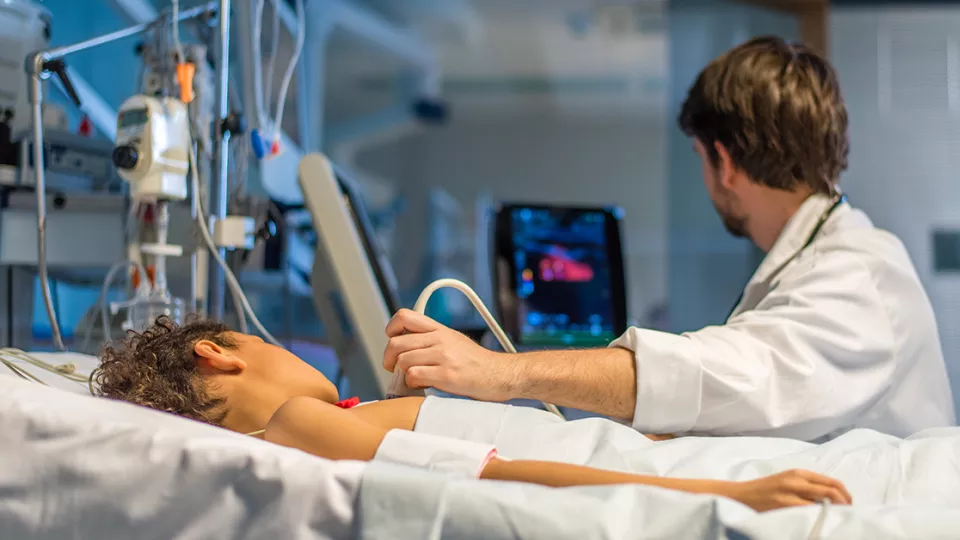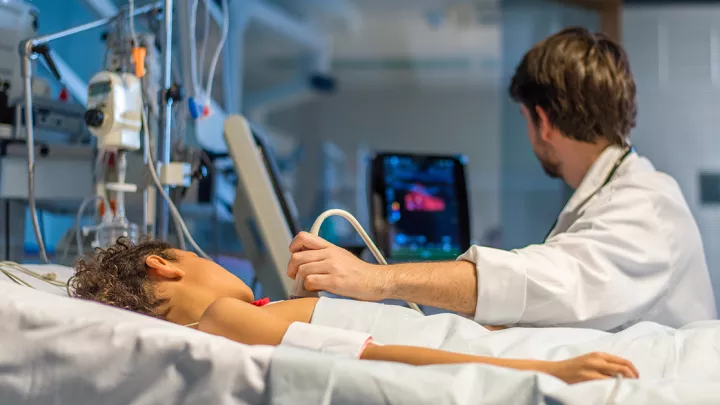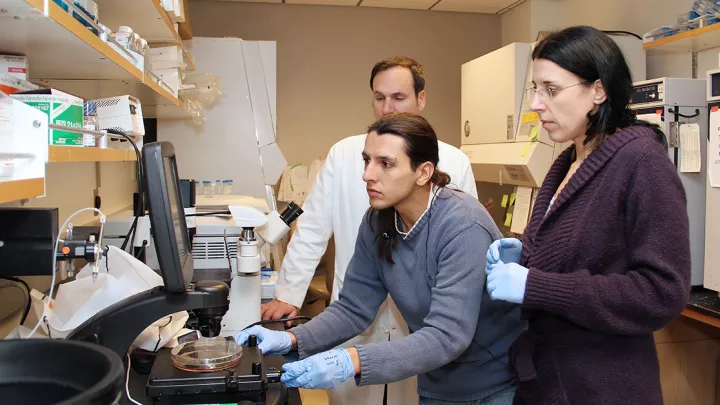
Children’s Hospital Los Angeles Receives $2.8 Million Award to Use AI to Predict Precision Dosing for Critically Ill Children
LOS ANGELES (December 5, 2022) – Predicting the right dose of medication that a critically ill child in the ICU will require in the future is a huge challenge for clinicians. FDA prescribing guidelines generally assume that patients are stable enough so that dosing for a given group is usually unchanged during treatment, but this ‘one size fits all’ approach to medication dosing does not accurately target the condition of each individual patient over time. “We are trying to anticipate what an unstable, critically ill child’s kidney function will look like tomorrow, based on what’s happened today, so we can predict that child’s medication needs,” says Dr. Michael Neely. “Doctors can estimate the dose of medication needed, but that may not necessarily be the right dose for a particular patient.”
Dr. Neely’s laboratory at Children’s Hospital Los Angeles recently received a four-year, $2.8 million award from the National Institutes of Health (NIH) to use artificial intelligence to predict the optimal medication dosage that children in the ICU will need over time, as well as to assess their likely antibiotic resistance with greater precision. In this vulnerable population, even small changes can make a difference in a child’s survival.
Monitoring kidney function to track medication dosage
Doctors track medication dosage by monitoring children’s kidney function, as most medications are excreted through the kidneys. Dr. Neely and his team are measuring how quickly the kidneys clear serum creatinine, which is a standard measure of how well the kidneys function to filter medication from the blood. “The trouble is that we generally assume that once we know your volume and your clearance—how fast you get rid of the drug—that you always have the same values, but that’s not true,” says Dr. Neely, Chief of the Division of Infectious Diseases at CHLA. “This has broader implications. ICU doctors would like to know if their kids are going to be going into either renal failure or renal recovery.”
Computer modeling of how medications behave in patients can account for dosing differences among individuals to some extent but are limited at using present or past measurements to predict future dosages. This is because variables like medication volume and clearance in a child’s body can change day to day or moment to moment—a fluctuation called inter-occasion variability (IOV). “We make models of drug systems in patients to try to understand how the drug is behaving,” says Dr. Neely, Professor of Pediatrics and Clinical Scholar at the Keck School of Medicine of USC.
The Neely lab will build a series of recurrent neural networks to predict variability in kidney function in children over time and how that influences their response to medication. Recurrent neural networks use sequential data to predict changes over time and are especially good at pattern recognition. These networks will tap into CHLA’s massive Virtual Pediatric Intensive Care Unit (VPICU) database of clinical measurements from 20,000 critically ill children who have been treated at the hospital since 2009. The VPICU houses over 400 clinical variables such as lab values, vital signs and medication doses, including over 100,000 measurements of serum creatinine. Using massive numbers of measurements increases the chances of the model being able to sort clinically significant patterns from background noise.
The Neely lab will use special statistical algorithms—a set of rules used in problem-solving operations—to describe clinical measurements of critically ill children over time that may fluctuate independently of each other. The researchers will test these algorithms using 5,000 VPICU blood plasma measurements of the antibiotic vancomycin, to measure patient exposure over time.
Dr. Neely and his team will also employ recurrent neural networks to predict antibiotic effectiveness in children in the ICU by comparing the VPICU outcomes of children with staphylococcal bloodstream infections who were treated with vancomycin to those of children who did not receive the antibiotic. This will involve combining the VPICU data with measurements from an in-vitro hollow fiber infection model, a device with capillaries that exposes bacteria to antibiotics that can reproduce how a medication passes through a child’s body.
“Kidney function is critically important to what kind of concentrations of vancomycin you get,” says Dr. Neely. “To the human eye, it’s often a random pattern. But the computer might be able to tease out patterns, especially over a large group of patients.” The ability to more precisely predict medication dosages needed over time may allow doctors to calibrate medication doses more consistently, resulting in better treatment outcomes for critically ill children.
About Children's Hospital Los Angeles
Children’s Hospital Los Angeles is at the forefront of pediatric medicine, offering acclaimed care to children from across the world, the country and the greater Southern California region. Founded in 1901, Children’s Hospital Los Angeles is the largest provider of care for children in Los Angeles County, the No. 1 pediatric hospital in California and the Pacific region, and is consistently ranked in the top 10 in the nation on U.S. News & World Report’s Honor Roll of Best Children’s Hospitals. Clinical expertise spans the pediatric care continuum for newborns to young adults, from everyday preventive medicine to the most medically complex cases. Inclusive, compassionate, child- and family-friendly clinical care is led by physicians who are faculty members of the Keck School of Medicine of USC. Physicians translate the new discoveries, treatments and cures proven through the work of scientists in The Saban Research Institute of Children’s Hospital Los Angeles—among the top 10 children’s hospitals for National Institutes of Health funding—to bring answers to families faster. The hospital also is home to one of the largest training programs for pediatricians in the United States. To learn more, follow us on Facebook, Instagram, LinkedIn, YouTube and Twitter, and visit our blog at CHLA.org/blog.

